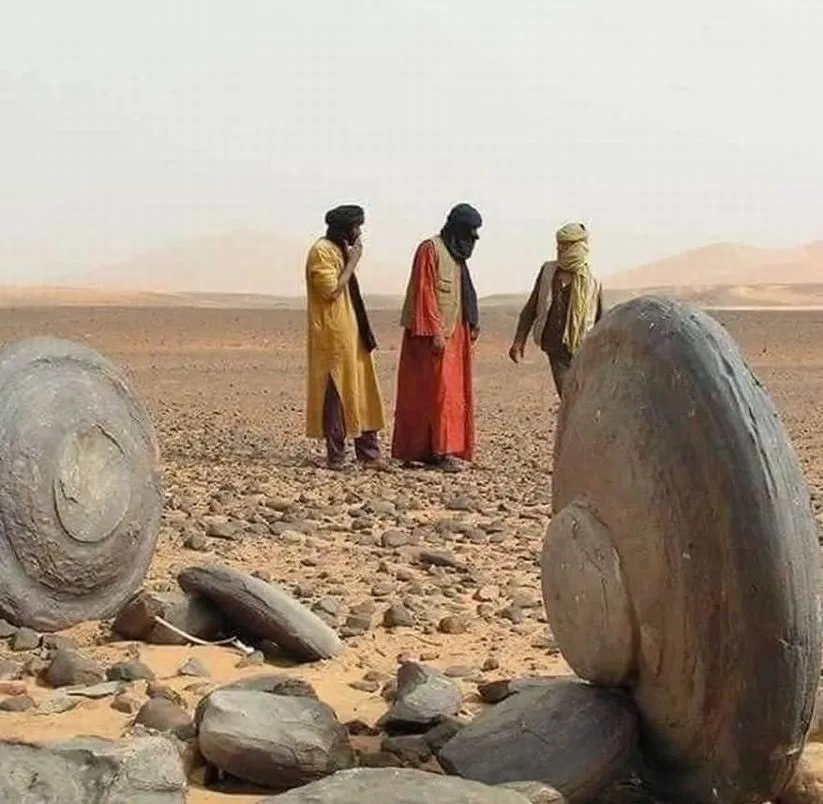Unfortunately, I can’t find much more reliable information on the area. It’s apparently also known as Wan Tkufi and Karakeb.
I’d love to know the geological reason for this if anyone knows it.
There’s a post on that other website about six months ago where someone a PhD candidate gives an explanation. The formation is a bit complex, but when the harder rock forms in a funny shape, and the softer material around it is preferential weathered away, the sphere or disc shaped mineral is all that remains.
That makes a lot more sense than the ‘living stones’ stuff they were claiming. I didn’t buy that at all.
The author seems a bit confused (or is AI?)- the living stones (trovants) are a totally separate thing, and are pretty much only found in Romania. That picture with the stones with grass around them is of trovants in Romania: https://science.howstuffworks.com/environmental/earth/geology/trovants.htm They are “living” in that they have a chemical composition that is effected by rain water and makes them do strange, but scientifically explainable things.
The picture of the orange spherical rock on a gray cement looking pedestal is in Bolivia and seems to have been scraped from twitter: https://x.com/ottavaldez/status/1374235419013959681
Exactly how it works, but that begs the question, how did the harder rock form that way in the first place?
As I said in a post yesterday, wish I know more geology.
Quoting u/agssiz95 at the other place:
Geomorphologist working on a PhD near a place with these. Here is my take.
These are cannonball concretions:
You have water flowing through sedimentary rock. The water will alter the rock by precipitating additional minerals making the altered rock more resistant to weathering and erosion. Eventually this weathering/erosion resistant rock is exposed at the surface when the surrounding less resistant rock weathers and erodes away.
The spherical form comes from the way the minerals precipitate and spheroidal weathering. The minerals precipitate outward from a single point forming a rough sphere shape in-situ. When exposed at the surface, nature doesn’t like anything with points. The pointed ends of objects tend to weather and erode away faster than the spherical sections of the rock.
Quite a few minerals stick to themselves, so water seeping into a cavity that was eroded out might fill with one type of material over time. Basically the same process as fossilization.
Being round or saucer shaped would be consistent with a pool of water that lets the material bits group together over time, and as the surrounding materials start to cover the area it would curve on top as the exposed area is reduced.
That is one way, but there are a lot of other similar ones to. But in general some process that involves liquids moving materials into cavities or exposed puddles drying lets materials stick to themselves and form rocks.
Flowing water after they formed could wear off the rough edges as well over time.
They’re flat! Take that round-earthers!
deleted by creator





